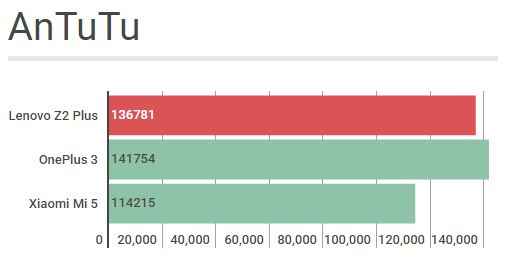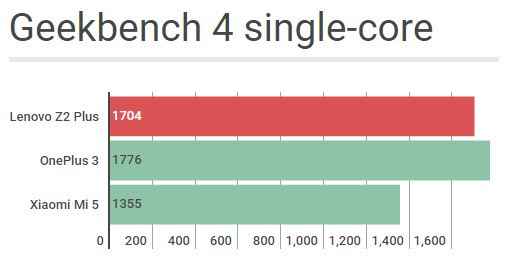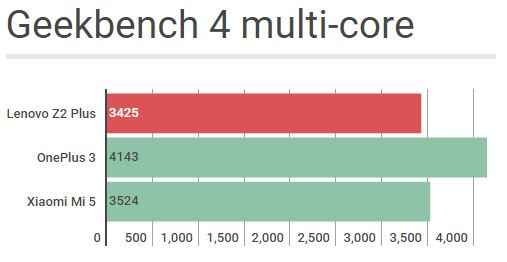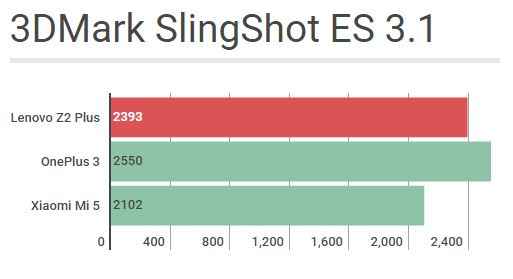Mid-tier flagship shootout: Lenovo ZUK Z2 v. OnePlus 3 v. Xiaomi Mi 5
The least expensive Snapdragon 820 phones are quite powerful devices, each with its own set of strengths and compromises.
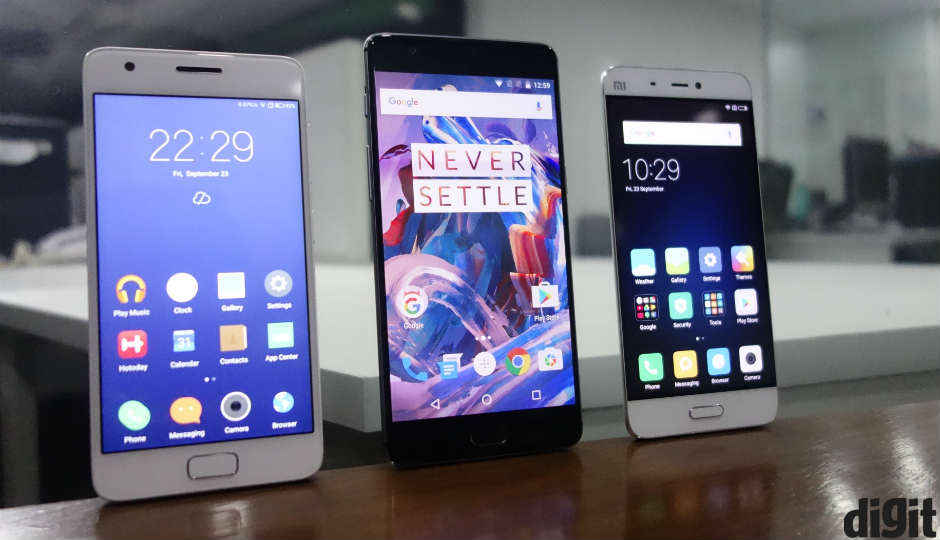
Mid-range flagship smartphones have been steadily bringing the best of hardware at highly affordable prices, and the three phones in contention here are prime examples. The Xiaomi Mi 5 was the first Qualcomm Snapdragon 820-powered smartphone in India, and for the longest time, held its ground as the most affordable one in the market. The OnePlus 3 has set benchmarks of incredibly fluid performance, with the Snapdragon 820 SoC coupled with 6GB of DDR4 RAM. The latest entrant in this segment is the Lenovo Z2 Plus, the first Snapdragon 820-powered smartphone priced beneath the Rs. 20,000 price mark.
 Survey
SurveyOn paper, all of these smartphones have the ability to provide sublime performance, and be sound, all-round performers. But, upon closer inspection, there are a number of things that are fundamentally different here. Should you opt for the Lenovo Z2 Plus, the least expensive of the lot? Or is the Xiaomi Mi 5 the perfect for ergonomics? Or, would you put your faith in the OnePlus 3? Here’s everything you need to know about the mid-range flagship smartphones at hand.
Note: We have used the Lenovo ZUK Z2, the international version of the Lenovo Z2 Plus launched in India, for this comparison. It retains the same hardware, except for the tweaked UI on the Z2 Plus.
Build, Design, Ergonomics
Each has its strength here. The Xiaomi Mi 5 has the smallest footprint of the three, and is also the sleekest. The curved glass back is great to hold, and the 5.15-inch display is arguably a good enough size (fans of compact smartphones will agree). The build quality feels premium, too, although the device is quite slippery, which makes it prone to falling from your hands, which in turn makes it somewhat brittle.
The Lenovo ZUK Z2, meanwhile, has a fiber glass body that feels reassuringly sturdy. The black colour version is a fingerprint and smudge magnet, but the device has a very pleasant, overall elegant feel. The 5-inch display allows Lenovo to keep it reasonably ergonomic, although the device is the thickest of the three. It is not heavy per se, but it carries a certain weight, which actually works in its favour.
The OnePlus 3, however, feels the best among the three. The metal build feels premium, and despite having the largest display size (5.5 inches), it is still quite ergonomic. The device is sleek, has reasonably decent grip (better than ZUK Z2 and Mi 5), and even facilitates one-handed typing. While design remains subject to personal choice, I personally find the OnePlus 3 the best-looking, and even more premium than the other two. The Xiaomi Mi 5 matches it to a close second, but the slippery build works against it.
Winner: OnePlus 3
Display
The ZUK Z2 uses a 5-inch display, the Mi 5 uses a 5.15-inch display, and the OnePlus 3 uses the flagship standard display size of 5.5 inches. None of the companies have stressed to pack the displays with too many pixels, and screen resolution for all three are at an optimum 1080×1920 pixels, or Full HD.
Touch response is fluid for all three. The OnePlus 3 uses OxygenOS with near-stock Android Marshmallow interface, the Mi 5 runs on MiUI (which is very heavily customised), and the ZUK Z2 uses ZUI. It is to be noted that in India, the Z2 Plus uses a very similar UI under the same name, but with an app drawer and an added health app to cater to Indian usage trends. The Z2 Plus’ touch response feels the most fluid among the three, although there is nothing to complain about any of these smartphones.
In terms of vibrancy, contrast and colour accuracy, the OnePlus 3 yet again rules the pack. The Mi 5 is equally vibrant, but the colours appear slightly oversaturated on it. I personally prefer the near-neutral tone of the OnePlus 3’s display, and the added warmth of the display makes it even better to use. The ZUK Z2 does fairly well with colour accuracy, but does not match up to the contrast levels in the displays of the other two. Even if you are okay with it, there is one particular aspect that makes the Z2 particularly dull.
We’re talking about brightness here. In our luminance test, the OnePlus 3 scores the highest brightness of the three, at 765 lux. The Xiaomi Mi 5 is a close second at 723 lux, while the ZUK Z2 measures only 464 lux. This contributes to making the Z2 look rather dull, and under direct sunlight, this has bigger impact. Screen legibility is particularly compromised on the Z2, and the OnePlus 3 packs in the best balance of colour, brightness, sharpness and contrast among the three smartphones.
Winner: OnePlus 3
Performance
This brings us to our pivotal point – performance. The OnePlus 3 pairs the Snapdragon 820 running at 2.15GHz with a whopping 6GB of RAM, while the Z2 Plus uses the same clock speed of the Snapdragon 820 along with 4GB of RAM. The Mi 5, meanwhile, only comes with 3GB of RAM. These may seem mere numbers, but they do reflect in real life.
Simply put, the OnePlus 3 feels the most powerful of the three. Apps load seamlessly, there is not a single glitch even when you shift between multiple apps and/or settings, and even with prolonged 4K recording, you can hardly set it wrong. The Z2 Plus feels fluid, too, and upon our initial tests, seem to match the grace of the venerable OnePlus 3. We could not load our heavy performance tests because of a technical glitch, but the benchmarks seem to relay exactly this.
The Xiaomi Mi 5, evidently, comes third. Married to a heavier UI, operations on the Xiaomi Mi 5 feel distinctly slower than the other two. It is not something that you will really notice in real life, but when compared, the difference is there for everyone to see. The Mi 5 also uses an underclocked version of the Snapdragon 820 SoC (clocked at 1.8GHz), which further contributes to the slower performance speeds.
It is too early to call out the Z2 Plus as a clear winner, and the OnePlus 3 remains the reliable winner here. It is certainly the fastest of the three, but the difference is only visible when you compare the devices parallely. Value for money, though, can play a crucial role for the Lenovo Z2 Plus, and we urge you to wait for our final verdict in the review.
Winner: OnePlus 3
Camera
The OnePlus 3 is the clear, runaway winner here. The 16-megapixel Sony IMX298 offers one of the most well-balanced smartphone photography experience with the OnePlus 3, and subjects in photographs retain good sharpness. The colour balance is also quite good, and alongside being true to source, the slightly accentuated saturation makes colours look really vibrant. The OnePlus 3 also fares well with image noise, and manages it the best among the three devices here. It also does best in low light, and is the clearly superior performer here.
The Xiaomi Mi 5, despite using the same image sensor, does not deliver similar performance. Low light performance is quite poor, with distinct amount of image noise making subjects soft under low light. Even in bright light, photographs do not retain the same levels of sharpness and contrast as the OnePlus 3 does, making it a fairly average performer.
The 16-megapixel Samsung ISOCELL sensor on the Z2 Plus is clearly the inferior among the three. Details are lesser, image noise is higher, and colours look somewhat desaturated from true-to-source. The Z2 Plus also delivers the least favourable low light performance among the three, and photography is certainly not its strongest element. We will comment further on imaging quality in our final review of the Lenovo Z2 Plus, but this is essentially what you get in terms of photograph quality here.
Winner: OnePlus 3
Battery
The Xiaomi Mi 5 and OnePlus 3 packs in 3000mAh batteries, while the Z2 Plus has a 3500mAh battery pack. After 10 minutes of 4K video recording, while the Xiaomi Mi 5 reported a 9% battery drop, the OnePlus 3 showed 7% battery drop, and the Z2 Plus lost 5% power. While this is a very basic test of battery longevity, the Z2 Plus may possibly have the upper hand in battery stamina. It also comes with ICC technology, which basically cuts off charging once your device powers up to 100%. This should ideally conserve battery power, and maintain your battery better in the long term. It is not clearly established, but with a smaller display and larger battery pack, the Lenovo Z2 Plus seems to have the upper hand in battery life.
Winner: Lenovo Z2 Plus
Bottomline
Evidently, it is the OnePlus 3 that runs out the clear winner of the three, of now. While extensive performance and battery test on the Lenovo Z2 Plus still remains to be done, the OnePlus 3 seems by far the most well-rounded smartphone you can buy. Value of money may play a crucial role in this segment of mid-tier flagships, but the vastly superior camera on the OnePlus 3, coupled with a larger display alongside maintaining ergonomics give OnePlus a clear upper hand in this competition.
It is the OnePlus 3, that wins our mini shootout of mid-range flagship smartphones.


